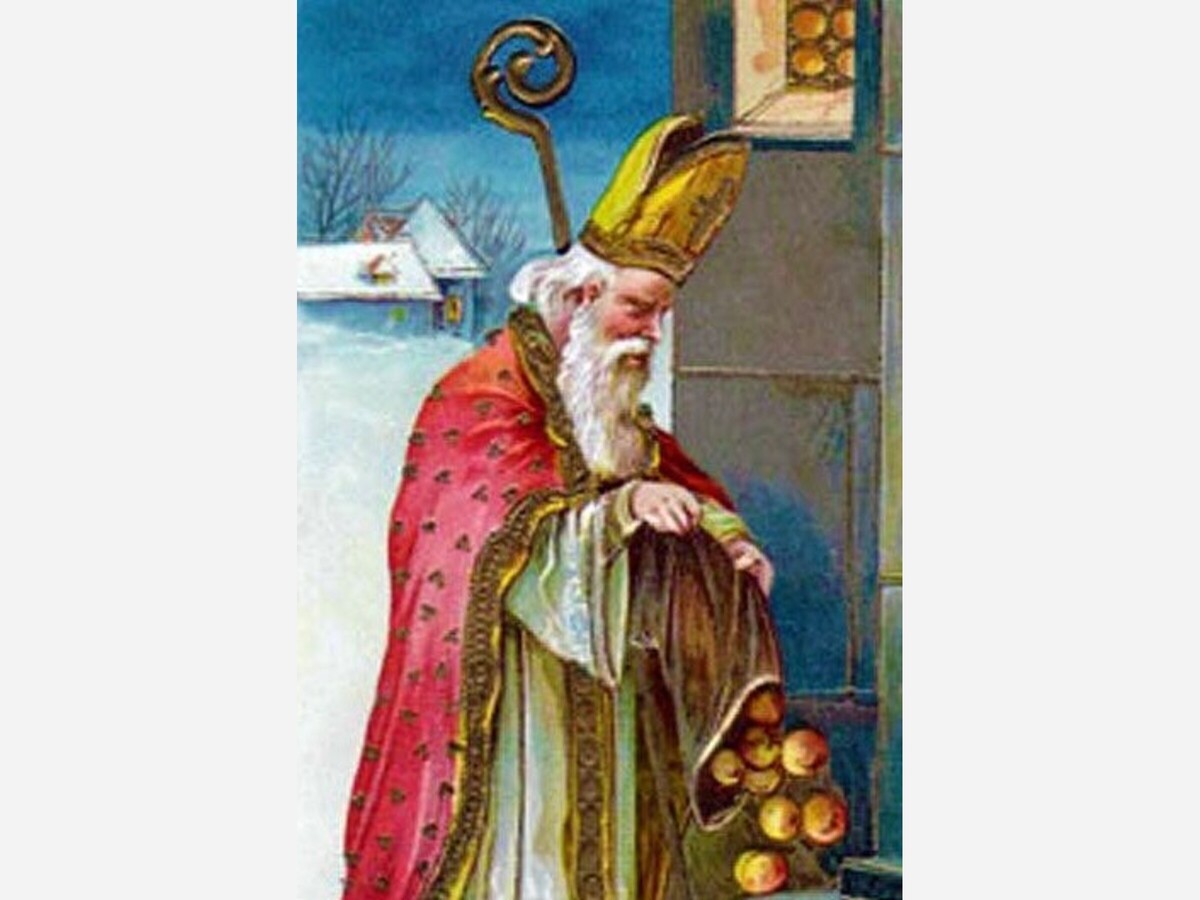Image

How a 4th Century Bishop Became a Beloved Christmas Icon
As Christmas approaches, millions of children around the world eagerly await the arrival of Santa Claus, the jolly old man who brings them gifts on the night of December 24th. But who is Santa Claus, and where did he come from? The answer lies in the life and legend of Saint Nicholas, a 4th century bishop who is widely revered as a protector of children and a model of generosity.
Saint Nicholas was born in the late 3rd century in Patara, a coastal city in the Roman province of Lycia, in present-day Turkey. He was raised by devout Christian parents who died when he was young, leaving him a large inheritance. He decided to use his wealth to help the poor and the needy, following the words of Jesus: "Sell what you own and give the money to the poor." (Mark 10:21)
One of the most famous stories about Saint Nicholas tells how he saved three young girls from being sold into slavery by their father, who was in debt. Nicholas secretly threw a bag of gold coins through the window of their house at night, enough to pay for the dowry of one daughter. He did the same for the second and third daughters, but on the third night, the father discovered that it was Nicholas. He thanked him profusely and praised his kindness and generosity. Nicholas asked him to keep his identity and his deed a secret, and to give glory to God alone.
Saint Nicholas became the bishop of Myra, another city in Lycia, at a young age. He was known for his zeal, his orthodoxy, and his miracles. He was imprisoned and tortured during the persecution of Christians by Emperor Diocletian, but was freed by Emperor Constantine, who legalized Christianity in the Roman Empire. He may have attended the Council of Nicaea in 325, where he defended the doctrine of the Trinity against the heretic Arius. He died on December 6, 343, and was buried in his cathedral in Myra.
After his death, Saint Nicholas' fame spread throughout the Christian world. He was venerated as a saint and a wonderworker, and many churches and shrines were dedicated to him. He became the patron saint of sailors, merchants, archers, thieves, children, and many other groups and places. His feast day, December 6, was celebrated with great joy and festivity, especially in the Eastern Orthodox Church.
The devotion to Saint Nicholas reached its peak in the Middle Ages, when his relics were transferred from Myra to Bari, Italy, in 1087, by a group of Italian sailors who claimed they were guided by a divine vision. The translation of his relics increased his popularity in Western Europe, and many pilgrims flocked to his shrine in Bari. His feast day became a time of gift-giving and charity, especially to children and the poor.
The image of Saint Nicholas as a gift-bringer was influenced by various cultural and historical factors, such as the pagan traditions of the winter solstice, the Germanic god Odin, and the Dutch figure of Sinterklaas. Sinterklaas, or Saint Nicholas, was a tall, stern, bearded man who wore a red bishop's robe and a mitre, and rode a white horse. He was accompanied by a helper, Zwarte Piet, or Black Peter, who carried a sack of gifts and a rod to punish naughty children. Sinterklaas visited the homes of children on the eve of his feast day, and left them presents in their shoes or stockings if they had been good, or coal or switches if they had been bad.
The modern figure of Santa Claus emerged in the 19th and 20th centuries, mainly in the United States, where he was influenced by the writings of Washington Irving, Clement Clarke Moore, and Thomas Nast. Santa Claus, or Saint Nick, was a jolly, chubby, white-bearded man who wore a red suit with white fur trim and a matching hat. He lived at the North Pole with his wife, Mrs. Claus, and a team of elves who made toys for children. He flew around the world on a sleigh pulled by eight reindeer, and delivered gifts to children on the night of December 24th, through the chimney. He was known for his signature laugh, "Ho ho ho!", and his catchphrase, "Merry Christmas to all, and to all a good night!"
Santa Claus became a symbol of Christmas and a commercial icon, appearing in advertisements, movies, songs, and books. He also inspired other similar figures around the world, such as Father Christmas in England, Père Noël in France, Weihnachtsmann in Germany, Ded Moroz in Russia, and Papá Noel in Spain.
Despite the differences between Saint Nicholas and Santa Claus, they share a common essence: the spirit of generosity, kindness, and love. In caring for others, they both remind us of the true meaning of Christmas, which is not about material gifts, but about the gift of God's Son, Jesus Christ, who was born in a humble stable to save us from our sins. They both inspire us to share our blessings with others, especially the less fortunate. We are reminded to be grateful, joyful, and hopeful, and to celebrate the birth of our Savior with faith and love.
As we prepare for Christmas, let us remember the legacy of Saint Nicholas. Let us follow his words, which he said to the father of the three girls he saved: "Give glory to God alone."